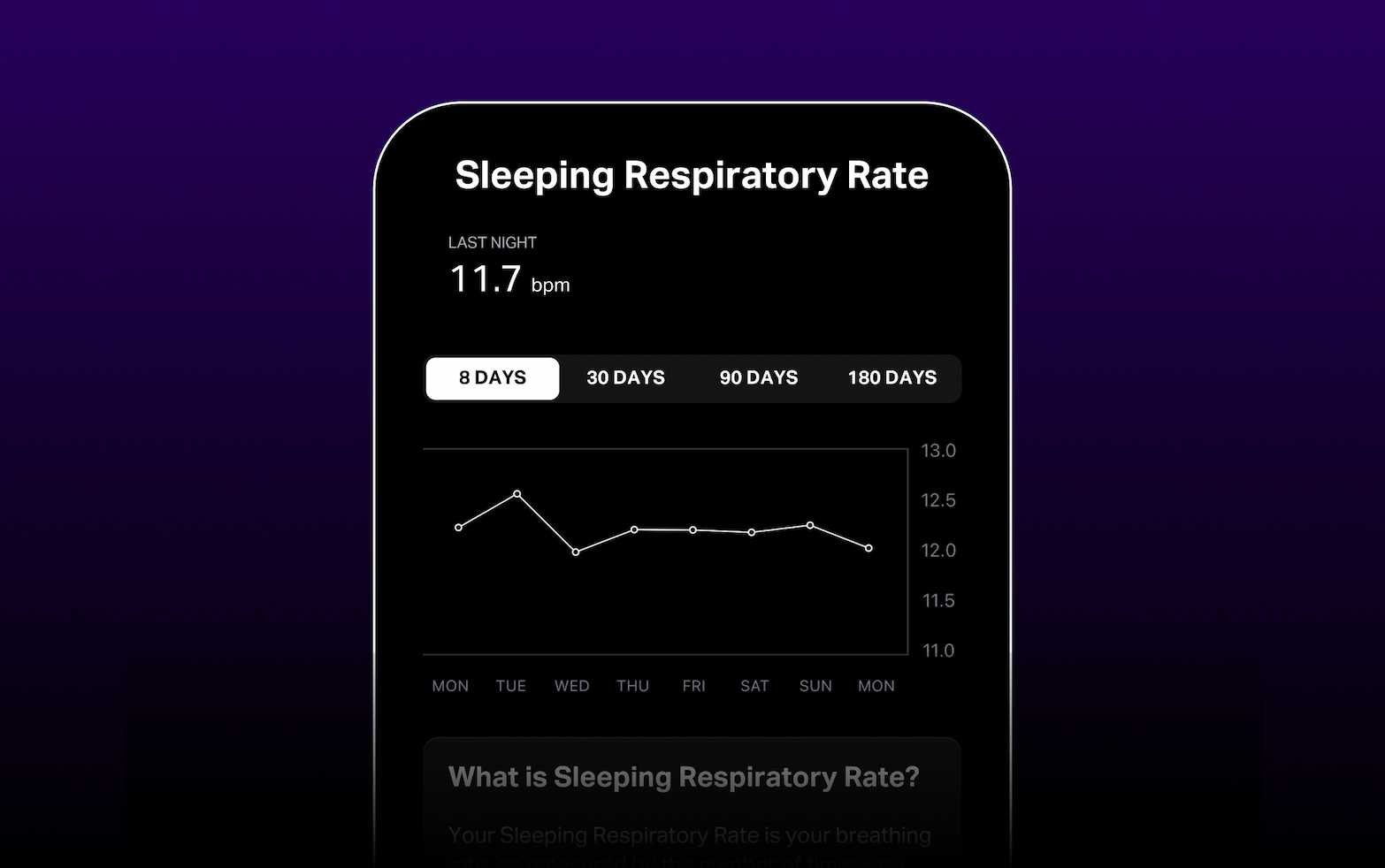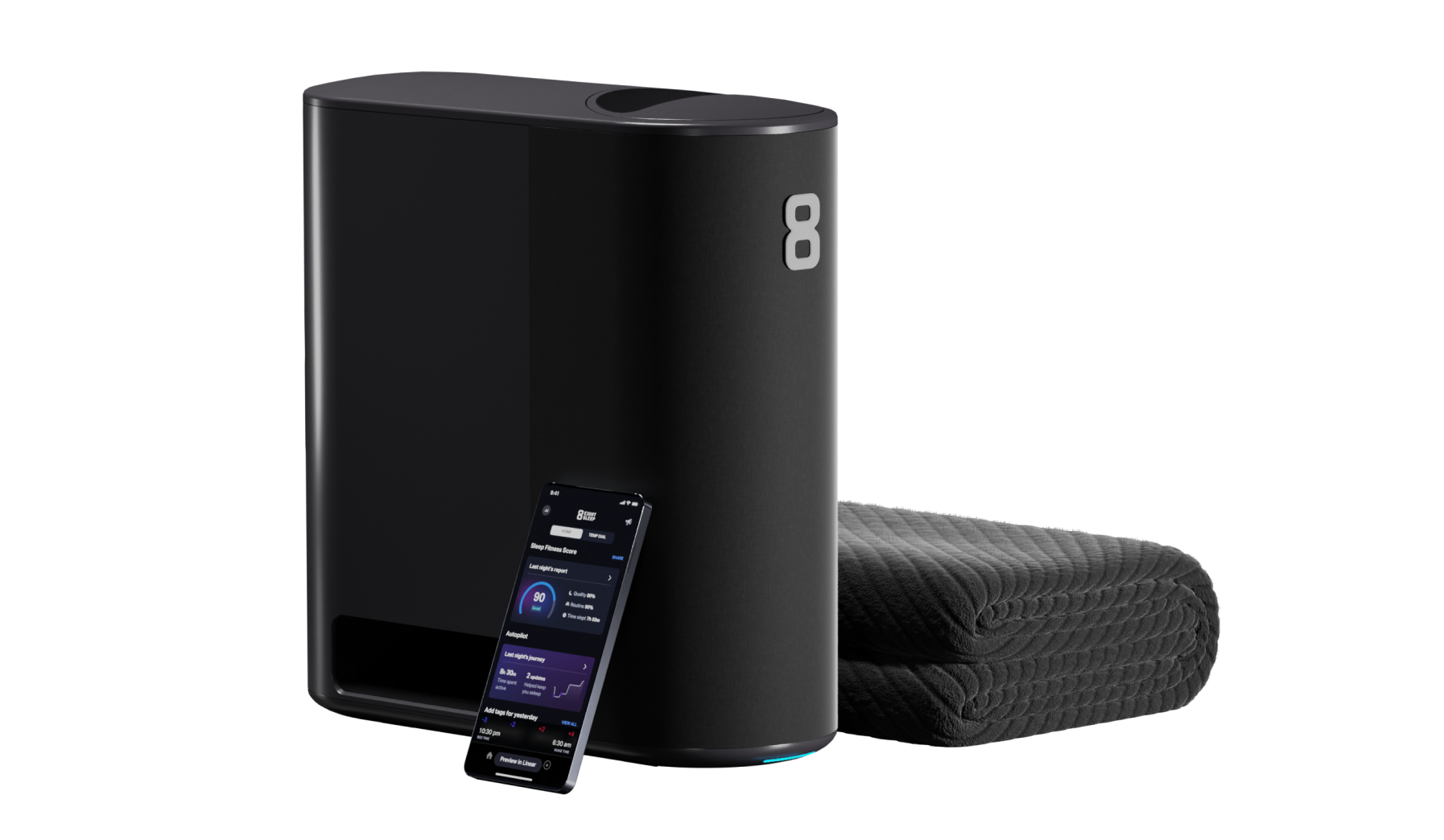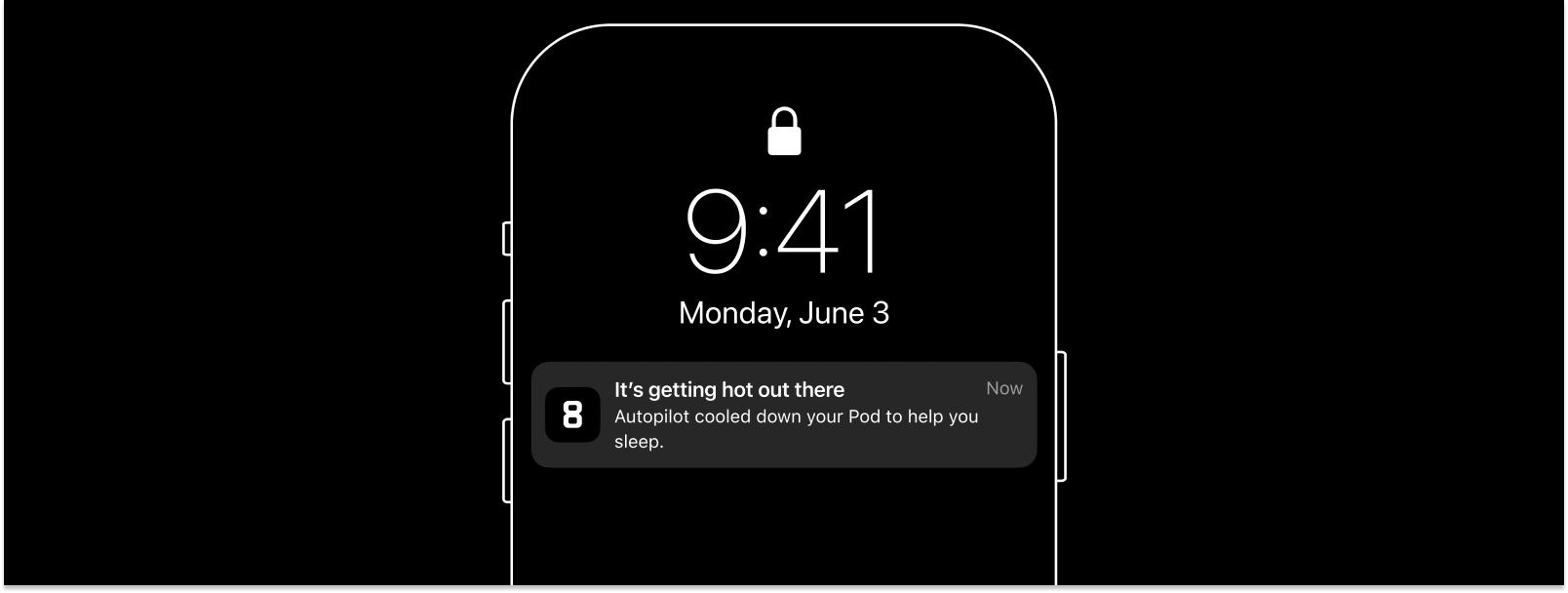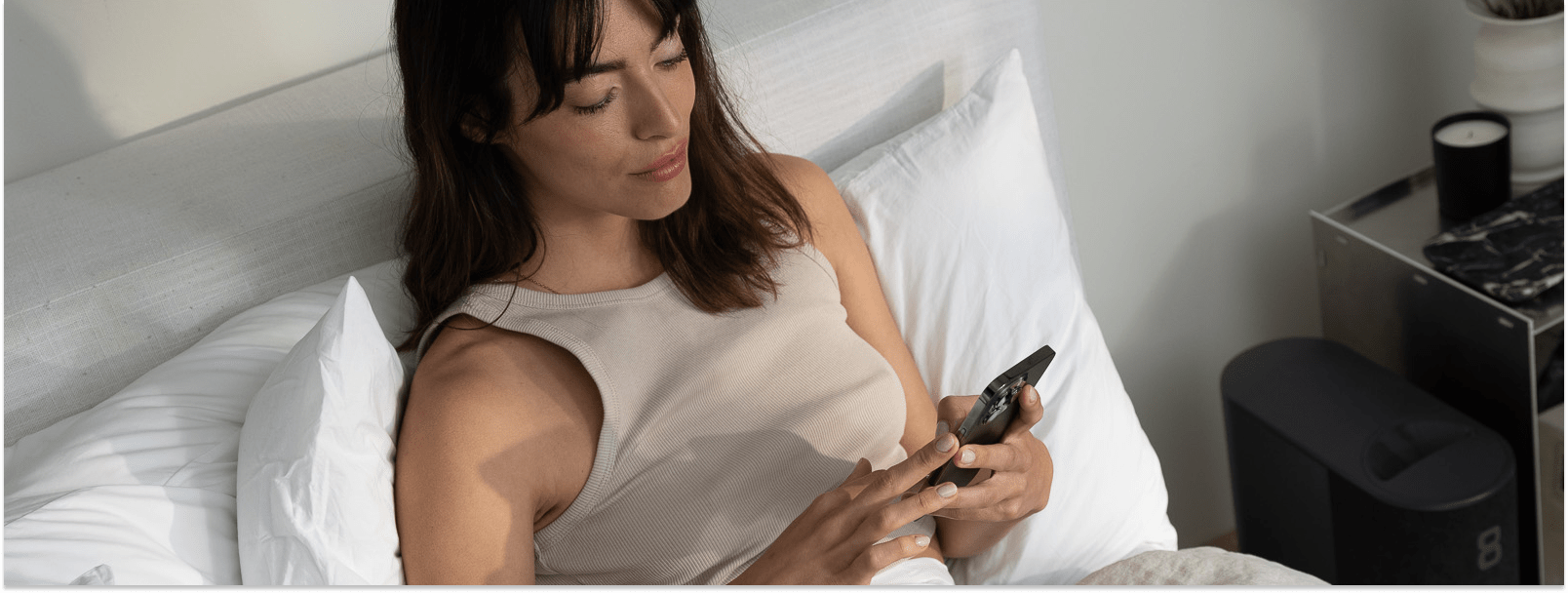At Eight Sleep, we strive to provide our members with not only an optimal sleep experience, but also highly accurate biometric data during sleep. Our sensing technology, embedded in the Pod’s Active Grid Cover, is designed to monitor a variety of biometrics without any wearable and for up to two people on the same bed.
Today, we are launching a key update to our respiratory rate (RR) algorithm, live in the Eight Sleep App, to all Pod members.
The performance of this new RR algorithm was validated on more than 367 nights of data, comprising over 180,000 minutes of sleep, against the gold standard measurement for RR: a respiratory inductance plethysmography belt.
The Pod’s Respiratory Rate Algorithm is 98% Accurate
Key Statistics
Eight Sleep’s sleeping RR algorithm has a mean absolute error of less than one breath per minute (0.28 breaths per minute), a mean absolute percent error of 1.9%, and mean error of -0.13 breaths per minute.
One of the best ways to visualize this excellent accuracy is to look at the correlation value (i.e. correlation coefficient) between the gold standard RR and the Pod RR. A correlation value of zero means there is no relationship between the two devices, and a correlation value of 1.0 is the highest correlation value and means that the RR values from the Pod perfectly match that of the gold standard RR.
The correlation value between the Pod RR and gold standard RR is 0.983 (r² = 0.967) – a near perfect match (Fig. 1).

Figure 1. Correlation between the Eight Sleep Pod RR and the gold standard RR via respiratory inductance plethysmography belt (r² = 0.97). Each dot represents a single night of sleep (k=367). The black dashed line represents a correlation value of 1.0 or the best-fit line (1:1 match between Pod and gold standard RR).
The Pod measures your RR in real-time throughout the night on a minute-by-minute basis. Below, you can see a time-series plot of the Pod RR compared to the gold standard RR throughout the night for one participant.

Figure 2. Respiratory rate (RR), in breaths per minute, throughout the night for a single participant. Gold standard RR (via respiratory inductance plethysmography) in blue vs. the Pod RR in orange.
What is respiratory rate and why measure it?
Respiratory rate is considered one of the main vital signs that is important to measure for overall health. A RR that is too low or too high could indicate acute or chronic illness. Put simply, RR is the number of breaths you take per minute. When you inhale, you breathe in mostly oxygen that is used throughout the body to create energy for all of the activity that you do (both mentally and physically). When you exhale, you are mostly breathing out carbon dioxide. This process is important because it helps remove waste from your cells and keeps your body at normal oxygen/carbon dioxide levels (i.e. normal acid/base balance or pH levels; ref).
A normal RR is approximately 12-20 breaths per minute at rest (ref) but can exceed 40 breaths per minute during exercise. In general, the harder you are exercising, the higher your breathing rate (ref). Or, if you take a trip to a high altitude location, you may also notice that your respiratory rate increases to bring more oxygen into your body since the air has lower oxygen levels than normal (ref).
However, if you notice an elevated breathing rate while you’re resting or sleeping, this could indicate illness (e.g. COVID or sepsis), an underlying condition (e.g. emphysema), or medical emergency (e.g. cardiac arrest). To understand whether you may have an abnormal RR, it is important to look at changes in RR over several days compared to your baseline (or normal) RR taken across several weeks. For example, in ~36% of symptomatic people with COVID, their RR increased by 3 breaths per minute or more from their normal RR (ref). It is also important to look at the absolute value of RR, as values above 25 breaths per minute (while at rest) are abnormal and often indicate a medical condition (ref). As is with any medical issue or questions, please consult your physician for any medical advice.
Note to current Eight Sleep members about our RR update
With this latest RR update, you may notice a change in your nightly RR compared to previous measurements on the Pod. This is due to a change in our RR computation method and does not reflect a change in your overall health.
Appendix
Study Details
Participants: 72 participants’ data from two separate studies, totaling 367 nights, were used for this analysis. Approximately 28% of participants were female. Participants’ average age was ~33 y, and ranged from 22 to 64 y.
Methods: Participants slept on the Pod for one to nine nights (average of five nights), while wearing a gold standard device (i.e. respiratory inductance plethysmography belt; Cerebra Sleep System (Study 1) or Zmachine Synergy (Study 2)) to obtain true RR that could be compared to the Pod RR. Participants were allowed to select any Pod temperature while they slept.
Statistical Analysis
The Pod respiratory rate algorithm identifies respiratory peaks each minute. These peaks are then filtered (to remove outliers), and a nightly median respiratory rate is calculated. Each nightly median respiratory rate from the Pod was compared to the median nightly respiratory rate from the respiratory inductance plethysmography belt.
For each night, the mean absolute error (i.e. the absolute difference between the Pod and gold standard RR), mean error (i.e. the difference between the Pod and gold standard RR), mean absolute percent error (i.e. the mean absolute error divided by the gold standard RR), and correlation value (Pearson r correlation coefficient) were calculated. The final statistics presented here are the mean of all 367 nights.
Authors: Dr. Nicole Moyen and Brian Schiffer





